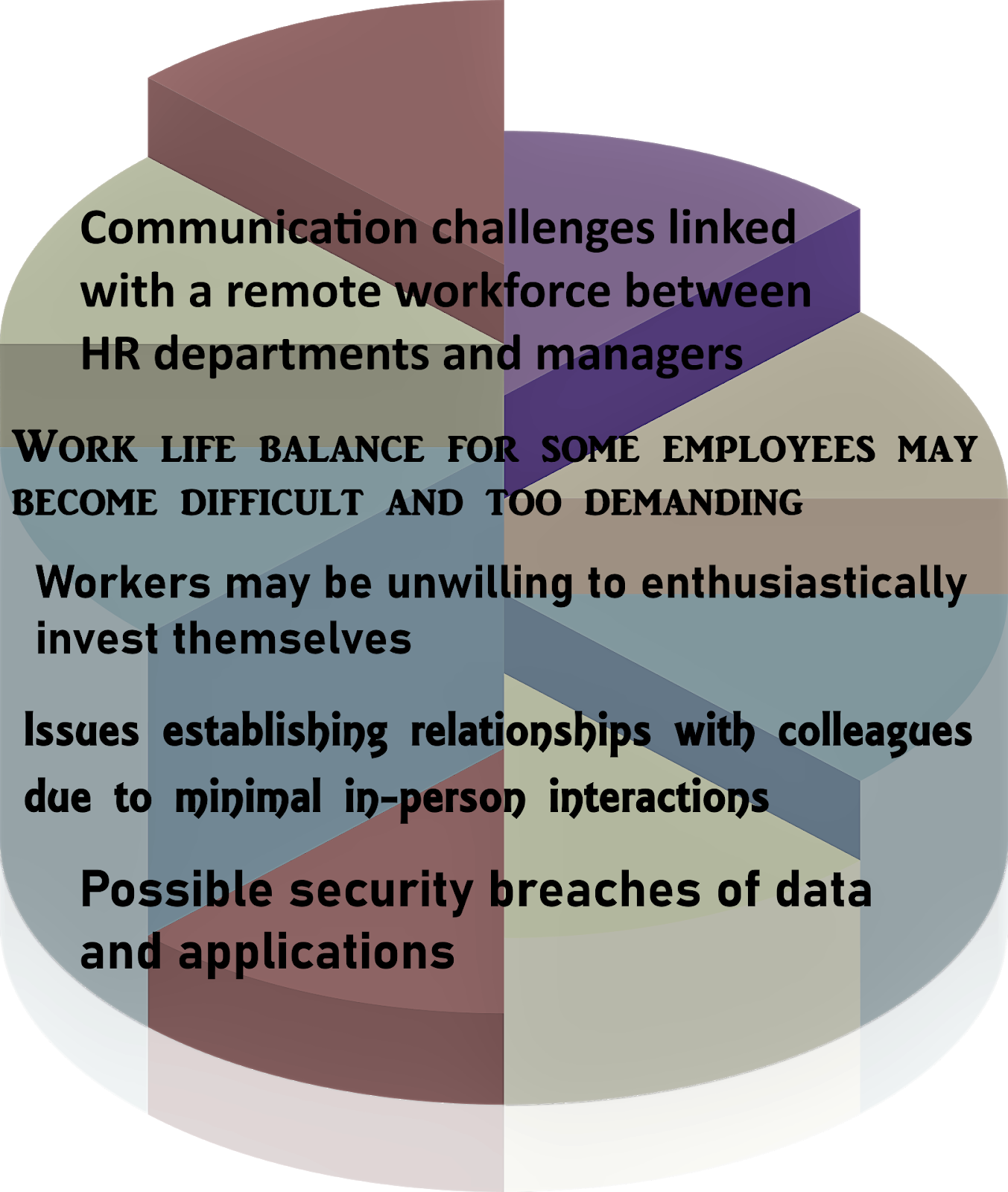What is a remote workforce and what are the pros and cons?

The world has transformed from an in-office cubicle-centered archetype to a robust remote workforce. To put it another way, the reign of hiring only in-office employees is over, and remote and/or hybrid work arrangements have taken center stage.
In fact, according to recent research, remote work increased by roughly 45% in the last few years and approximately 90% over a decade. Globally, over 38% of companies routinely hire remote workers.
This speedy transformation in hiring trends has taken HR departments by surprise. And in some cases, it has found them ill-equipped for such a speedy transformation. What’s important is to determine where your company fits into the new work-from-home paradigm.
This includes weighing the pros and cons of hiring a remote workforce and how this benefits your company going forward.
But before we proceed, let’s define this concept.
What Is a Remote Workforce?
A remote workforce is an alternative approach to employment that allows employees to work outside the traditional office whether on a full-time, part-time, or intermittent basis. All essential tasks are performed externally and exclusively in a conventional office setting.
A remote workforce should be able to perform the tasks they are hired to do without the use of in-office facilities. This means fulfilling work assignments efficiently and favorably independent of their employer’s workspace.
To ensure that your remote workforce can carry through on assignments, you will need to provide top-notch technology such as video conferencing and teleconferencing apps and remote team management tools. You may even need time-tracking tools.
Overall, a digitally automated remote workspace should consist of superb application delivery, target management solutions, content collaboration capabilities, essential apps, and a reliable internet connection.
TIP: A Reliable Internet Connection Is Indispensable for Teleworkers
A dependable internet connection is crucial for telecommuters. In a nutshell, it guarantees that your remote hires will be able to meet deadlines without consistent interruptions and that their at-home digital setup can handle the various apps required to do their job.
Telecommuters need at least 50 to 100 Mbps to download speeds and a minimum of 10 Mbps upload speeds for best results.
Advantages of a Remote Workforce
Improved Worker Interaction and Productivity: Studies show that productivity increases with remote work arrangements. What’s more, telecommuters are commended for exceeding work expectations.
- Reduces Overall Costs: Seeing that a remote workforce is employed from home, companies save due to reduced overall spending on rent, space, equipment, furnishings, and sometimes salaries. Some companies have gone completely remote and ditched the traditional office altogether. Incurring additional costs for software subscriptions, and depending on the arrangement with your employee; computer, and travel costs for face-to-face meetings, you’re still saving on overall yearly costs.
- Improved Employee Contentedness: Over 50% of remote workers asserted that they prefer working remotely. This is an HR department’s dream as employees are more likely to stay with a company that offers an option of a work-from-home arrangement. Also, individuals satisfied with a remote work arrangement take pleasure not only in their work, but in spending time with family, conveniently taking care of personal business, and working outside traditional hours, if required. When employees are content, they’re more in sync with company goals and don’t mind putting forth the effort to achieve them.
- Fewer Workflow Disruptions: Hiring a remote workforce is insurance against unexpected mishaps. For example, if there is a natural disaster, or like during recent times a lockdown, telecommuters can continue to thrive in their workspaces with little to no interruption.
- Access to a Global Workforce: Armed with the right technology tools, HR personnel will have easy access to a distributed workforce. For example, if you need an individual with a specific skill set and there’s no one local to fill it, you’re sure to find someone if you search globally.
Disadvantages of a Remote Workforce

- Communication Challenges With HR and Managers: Sometimes communication issues arise due to the very nature of a telecommuting setup. The convenience of going to a worker’s cubicle for an impromptu discussion is no longer possible. Video conferencing, teleconference meetings, live phone exchanges, chat tools, and emails make communication easier. However, these communication methods often lead to time-wasting in the workplace as very few leaders know how to organize productive teleconferences. Although it seems like in-person contact works best during the familiarization phase, that assumption is only a half-truth. Current studies suggest that asynchronous communications are just as effective as synchronous communication channels. Additionally, an adequate support system can work wonders along with training remote workers using the right tools.
- Security Breaches: With cyber-attacks and data breaches on the rise and the accessibility to technological tools that make even an amateur thief appear like a smooth criminal, companies need to protect their data without restricting employees of what they need to do their job. This includes passwords, emails, files, etc., as employees may require access to resources and data via personal devices and public WiFi. Luckily, this type of disaster is virtually preventable. Maybe not 100%, but you can get close enough. Organize endpoint security to administer to selected devices with access to company data along with an encrypted email to secure data on public networks. Offering virtual private network services to your remote employees also protects their online privacy, allowing them to access servers anonymously. What’s more, the fail-safe way to safeguard remote employees is to utilize a secure digital remote work area where employees log in and where data, documents, and apps are accessible, while also maintaining the protection of sensitive data.
- Lack of Enthusiasm: Without the occasional pat on the back for a job-well-done and encouraging words in a live setting, can cause some remote workers to become apathetic to their work and your company. They may not mind doing the job, but without the energy generated from physical interaction with their colleagues, work may seem more like a chor even with the convenience of working from home. Al technology cannot replace the human touch. No matter what they say! Some remote workers handle working-from-home better than others. You must select not only the right people who can do the job but those who enjoy learning and can adapt to working alone. A remote employee may be quicker to quit a job where they don’t feel motivated, which could result in a high employee turnover. When questioned about what helps you to increase your motivation during the workday most answers were unrelated to work. For example, approximately 65% listened to music, nearly 50% said they corresponded with a fellow worker, and roughly 45% engaged in exercising. Additionally, remote work activities designed that engage employees, colleagues, and higher-ups, can be motivating and ignite enthusiasm.
- Work-Life Balance: Maintaining a work-life balance for remote employees can be as difficult as learning about how to use new technology. Previously, working from home was seen as a casual experience with minimal demands placed upon workers. Now, that working-from-home has become mainstream, employees are expected to be tech-savvy, organized, and available. Telecommuting is about work. There are deadlines to meet and additional project goals to reach. Additionally, indispensable tools like time tracking apps can be seen as offensive and too strict by some workers. However, proper interviewing techniques will help you weed out candidates who find it too difficult to competently juggle a work-life balance.
- Establishing Relationships With Colleagues: Working remotely is not the same as stopping by a coworker’s desk for a little chat or gathering in the company break room for a coffee. Employees may feel left out due to working alone for days on end and living in a different time zone unable to go to monthly in-person company meetings due to their location. These issues can be remedied by introducing morning chats with colleagues working on identical projects or arranging one-on-one contact between remote workers daily. Another strategy is to get every employee motivated and energized with virtual coffee breaks and inspiring activities.
The New Normal
Whether there are more pros or cons in your HR department’s decision to hire a remote workforce, there’s one thing for certain, remote work is here to stay. An entirely new generation of workers has caught on quickly. They’re very idealistic and are ever more on the prowl for “what a company can do for them” instead of simply looking for a job. One thing is for sure, without the option to work remotely, the skilled candidates you’re looking for will more than likely look elsewhere.
Bear in mind, that the most appealing incentive to get new candidates on board is offering remote work. Your candidate will be keener than ever to hear more about your job offer and your company. According to a survey conducted by Owl Labs, nearly 23% of surveyed participants are more than willing to accept a reduced pay packet of 10% to permanently work remotely. Not only that, nearly 60% of respondents stated that they are more likely to go with a company that offered remote work more so than a company that did not.
If you find that offering remote work positions easily fits into your company’s agenda, you’re on target. If not, you will have to consider adjusting the perspective of your HR department. Sure, transitioning from a strictly in-office setup to a full or partial remote work arrangement has its setbacks. However, at this time, it’s the “only game in town” and you have to play.
















